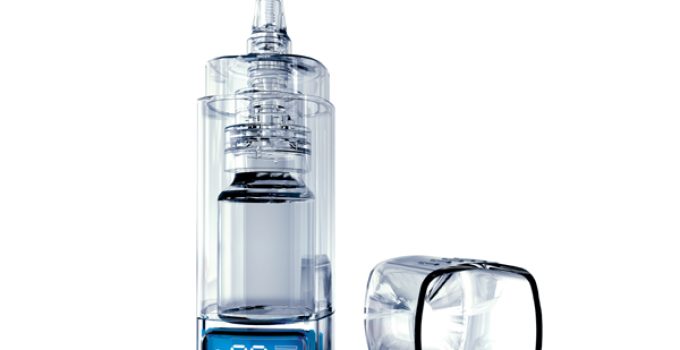Introduction to Nasal Drug Delivery
Nasal drug delivery has emerged as a significant alternative to traditional routes like oral or intravenous administration. This method offers a unique way to deliver medication directly to the systemic circulation, bypassing the gastrointestinal tract and first-pass metabolism. But what makes nasal drug delivery so appealing? Let’s delve into the details.
What is Nasal Drug Delivery?
Nasal drug delivery involves administering medication through the nasal passages. This method leverages the rich vascular network of the nasal mucosa, allowing drugs to enter the bloodstream rapidly and efficiently. This route is particularly useful for drugs that need to act quickly or are poorly absorbed through other means.
Historical Background
Historically, nasal drug delivery has been used for various treatments, from decongestants to hormone therapies. However, it wasn’t until the late 20th century that significant advances began to take place, paving the way for more sophisticated systems and technologies.
Understanding OINDP
OINDP stands for “Oral Inhalation and Nasal Drug Products.” It represents a specialized category of drug delivery systems designed to optimize the administration of medications via inhalation or nasal routes. OINDP encompasses a range of innovative technologies that enhance the efficacy and safety of drug delivery.
What is OINDP?
OINDP is a broad term that includes various devices and formulations used for delivering drugs through inhalation or nasal administration. These systems are designed to improve the precision, efficiency, and comfort of drug delivery, making them a revolutionary advancement in pharmaceutical technology.
Key Features of OINDP
OINDP systems are characterized by several key features:
- Precision: Accurate dosing ensures that patients receive the correct amount of medication.
- Efficiency: Enhanced drug delivery mechanisms improve absorption and minimize waste.
- Comfort: Modern designs focus on user comfort and ease of use.
The Advantages of OINDP in Nasal Drug Delivery
OINDP has transformed nasal drug delivery in several notable ways:
Enhanced Drug Absorption
One of the primary benefits of OINDP is its ability to enhance drug absorption. The nasal mucosa offers a large surface area and rich blood supply, which facilitates rapid drug uptake into the systemic circulation. This can lead to quicker onset of action compared to oral or injectable medications.
Improved Patient Compliance
OINDP systems are designed with user convenience in mind. Many devices are compact and easy to use, which can significantly improve patient adherence to prescribed treatments. Additionally, the non-invasive nature of nasal delivery is often preferred by patients over injections.
Reduced Side Effects
By targeting the nasal mucosa, OINDP can help minimize systemic side effects. The localized delivery reduces the risk of adverse effects that might occur with oral or injectable drugs, making it a safer option for many patients.
Comparing OINDP with Traditional Nasal Drug Delivery Systems
To appreciate the impact of OINDP, it’s essential to compare it with traditional Nasal Drug Delivery System.
Traditional Nasal Drug Delivery Systems
Traditional systems include nasal sprays and drops. While effective, these systems often suffer from issues like inconsistent dosing, limited drug stability, and user difficulties in achieving proper administration.
OINDP vs. Traditional Systems: A Comparison
OINDP systems offer several advantages over traditional nasal delivery methods:
- Consistency: OINDP devices provide more precise dosing.
- Stability: Improved formulations enhance drug stability and effectiveness.
- Ease of Use: Modern designs simplify administration, making them more user-friendly.
Innovations in Nasal Drug Delivery Technology
Recent advancements have pushed the boundaries of Nasal Drug Delivery Technology.
Advances in Delivery Mechanisms
New technologies in OINDP include advanced nebulizers and metered-dose inhalers that enhance drug delivery efficiency. Innovations such as micro- and nano-particle formulations are also improving drug penetration and absorption.
The Role of Digital Health in Nasal Drug Delivery
Digital health technologies are playing a crucial role in optimizing nasal drug delivery. Smart inhalers and tracking systems provide real-time feedback to patients and healthcare providers, improving treatment outcomes and adherence.
Challenges and Future Directions
Despite its advancements, OINDP faces several challenges.
Current Challenges in OINDP
Some challenges include device complexity, cost, and the need for ongoing research to address safety and efficacy concerns. Additionally, patient education is crucial for effective use of these advanced systems.
Future Prospects and Innovations
The future of OINDP looks promising with continued research and development. Innovations in drug formulations, delivery mechanisms, and digital health integration are expected to drive further improvements in nasal drug delivery.
Conclusion
OINDP is indeed revolutionizing nasal drug delivery by offering enhanced absorption, improved patient compliance, and reduced side effects. As technology continues to advance, OINDP systems will likely become even more effective and user-friendly, paving the way for more efficient and personalized treatments.



